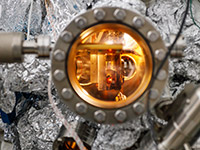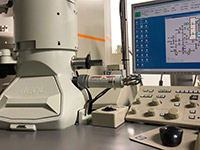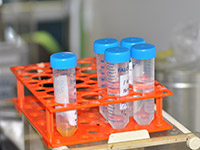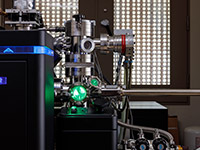

AIMR brings together leading researchers in the fields of material physics, materials, and devices from around the world, and adds Mathematical Science Group consisting of mathematicians and theoretical physicists/chemists in order to build a new form of materials sciences. Mathematics draws out the universal principles that underlie the various substances and materials, and is effective in creating new scientific principles that predict functions of new materials. Based on the new principles that have been elucidated, researchers gain a certain understanding and control of the materials at the atomic and molecular level, and through this process, contribute to society through the creation of Green Materials that play a role in energy harvesting, energy saving, and environmental clean-up.

An important mission of the Materials Physics Group is the pursuit of useful foundational physics aimed at the creation of electronic devices and functional devices that have a significant and useful purpose in real life. To that end, the team explores new materials and establishes a basic understanding of the materials. Research is carried out on various materials ranging from inorganic to organic substances, using devices and research facilities boasting unsurpassed performance in the world. By taking a variety of research approaches, the Materials Physics Group drives forward on its research activities in order to achieve its goals.

The Non-equilibrium Materials Group conducts research on advanced non-equilibrium materials that demonstrate outstanding physical, chemical, and mechanical properties. Examples of such materials would be amorphous, quasicrystalline, and nanocrystalline metal alloys. Particular focus is placed on nanoporous materials. The team studies experimental, analytical, theoretical, and computational scientific approaches.

The Soft Materials Group aims to achieve the innovative creation, identification, and functional manifestation of substances and materials (soft materials) with hierarchical structures, of sizes ranging from molecular to micro-meter sizes.

The Device/System Group comprises groups that are mainly engaged in research on spintronics, porous materials, hydrogen storage materials, nano-devices and bio-devices. The respective groups undertake research activities that span from the creation of revolutionary materials to the conception of devices. For instance, the spintronics group develops new materials for tunneling magneto-resistant element and elucidates spin dynamics, while the bio-device group combines the outcome of the research conducted by the two groups with its own wet chemical process, as part of its research on areas such as ultra water-repellent material that mimics the adsorption functions of living organisms.

The Mathematical Science Group uses mathematical concepts and analytical methods, such as discrete geometry, non-equilibrium dynamics, and topology, to investigate the abstract structure of materials, and attempts to formulate universal laws to determine material properties. In addition, young theoretical physicists/chemists participate in multiple projects in their role as the bridges that connect the mathematicians and the experimental materials scientists.
AIMR has injected particular effort into initiatives aimed at advancing research that is not restricted by the boundaries of existing research fields. Fusion research is an important approach in the creation of new scientific principles, and the institute promotes such research activities through Fusion Research Proposals, Friday Tea Time, and AIMR Seminars.